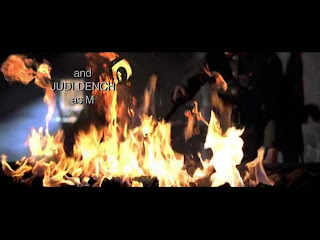It didn't take long after the advent of motion picture technology in the late 19th century for filmmakers to dabble in the horror genre, as witnessed by FrenchGermany and Nosferatu influencing the next generation of American cinema. Actor Lon Chaney, meanwhile, almost singlehandedly kept American horror afloat, with The Hunchback of Notre Dame, The Phantom of the Opera and The Monster, which set the stage for the Universal dominance of the '30s.
Kong. Despite the success of The Wolf Man early in the decade, by the 1940s, Universal's monster movie formula was growing stale, as evidenced by sequels lik The Picture of
Dorian Graye The Ghost of Frankenstein and desperate ensemble films with multiple monsters, beginning with Frankenstein Meets the Wolf Man. Eventually the studio even resorted to comedy-horror pairings, like Abbott and Costello Meet Frankenstein, which met with some success. Other studios stepped in to fill the horror void with more serious-minded fare, including RKO's brooding Val Lewton productions, most notably Cat People and I Walked with a Zombie. MGM, meanwhile A picture of dorian grey, contributed , which won an Academy Award for cinematography, and a remake of Dr. Jekyll and Mr. Hyde, while Paramount released the highly regarded haunted house picture The Uninvited.
Various cultural forces helped shape horror movies in the '50s. The Cold War fed fears of invasion (Invasion of the Body Snatchers, The Thing from Another World, The Blob), nuclear proliferation fed visions of rampaging mutants (Them!, The Beast from 20,000 Fathoms, Godzilla) and scientific breakthroughs led to mad scientist plots (The Fly).This i have also used within my film as i will use moders fears such as isolation and lonely ness and a fear of falure in everyday life.
The '70s pushed the envelope even further than the '60s, reflecting a nihilism born of the Vietnam era. Social issues of the day were tackled, from sexism (The Stepford Wives) to consumerism (Dawn of the Dead) to religion (The Wicker Man) and war (Deathdream). Exploitation movies hit their stride in the decade, boldly flouting moral conventions with graphic sex (I Spit on Your Grave, Vampyros Lesbos) and violence (The Texas Chainsaw Massacre, The Hills Have Eyes)
Horror in the the first half of the '80s was defined by slashers like Friday the 13th, Prom Night and A Nightmare on Elm Street, while the latter half tended to take a more lighthearted look at the genre, mixing in comic elements in films like The Return of the Living Dead, Evil Dead 2, Re-Animator and House. Throughout the '80s, Stephen King's fingerprints were felt, as adaptations of his books littered the decade, from The Shining to Pet Sematary. Film that are based on books are what originaly sparked my intrest in the idea of having a film that is a psycological horror that also uses a book.
Twenty-first century horror in the US has been identified with remakes of both American (Friday the 13th, Halloween, Dawn of the Dead) and foreign films (The Ring, The Grudge), but there have been innovations within American horror -- most notably the "torture porn" of Saw and Hostel fame. Outside of the US, there is as great a variety of edgy and innovative material as there has ever been in the genre. In addition to this Horror has become more and more famous through psycological horror and also the idea of being haunted has begun to re-terrify current generations films such as the Paranormal Activity series have done this verry well and i hope to do the same by using the sucsess of current horror films to make mine more popular.






















